Indus Valley Civilization (IVC), also known as Harappan Civilization after its first find-spot Harappa, was the largest of the four great ancient civilizations. It covered an area consisting of most of modern Pakistan, a significant part of India and parts of Afghanistan. It lasted for at least 1600 years. Its beginning date is not yet known but it did collapse due to unknown reasons somewhere around 16th century BC. Indus Valley Civilization is famous for its advanced engineering, well planned cities and a drainage system which wouldn’t be bettered for many centuries. Here are 10 interesting facts about the advanced features of the Harappan Civilization as well as its famous structures, artifacts, society, and its discovery in modern times.
#1 FIRST RECORDED NOTE OF Its Ruins WAS MADE BY A BRITISH ARMY DESERTER
The first recorded note of the discovery of Indus Valley Civilization (IVC) was made in an 1842 book by James Lewis. Lewis was a British East India Company soldier who deserted the army and while travelling through the Punjab province in British India saw the ruins of the ancient civilization at a small town called Harappa. By 1872, brick robbing had destroyed the upper layer of the site. These hard well-burnt bricks were primarily used to build a railway bed being constructed by the British. Though finds at Harappa were reported, it was not until 1920 that proper excavations began at Harappa under John Marshall, the then director of the Archaeological Survey of India (ASI). These excavations resulted in the discovery of IVC. Due to the common archaeological convention of naming a civilization after its first find-spot, IVC is also known as the Harappan Civilization.
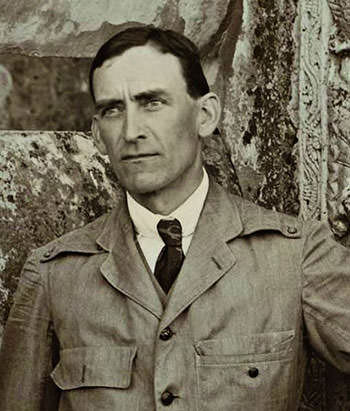
#2 IT IS THE LARGEST OF THE FOUR GREAT ANCIENT CIVILIZATIONS
Excavation of the sites of the Indus Valley Civilization is an on-going process and by 1999, 1,056 cities and settlements had been found. IVC flourished in the basins of two major rivers: Indus River, which remains one of longest in Asia; and Ghaggar-Hakra River, which is identified by many scholars as the dried up form of what was once the Sarasvati River. IVC encompassed most of Pakistan, a significant part of India and parts of Afghanistan. With an area around the size of Western Europe, it is the largest of the four ancient civilizations of Egypt, Mesopotamia, India and China. The era in which IVC existed is not known yet. According to a May 2016 study published in the prestigious Nature journal, experts now believe that the Harappan Civilization is 8,000 years old – 2,500 years older than previously thought. This would make IVC older than the Egyptian and Mesopotamian civilizations.
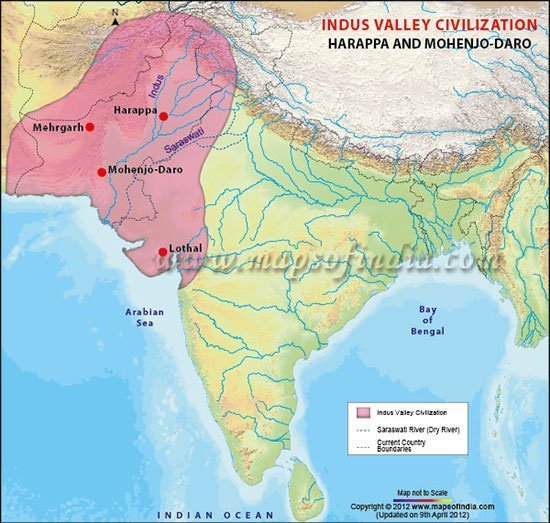
#3 INDUS VALLEY CITIES WERE ENGINEERING MASTERPIECES
Harappa, Mohenjo-Daro and other Indus Valley cities had a level of architectural planning that was unparalleled in the ancient world. For protection from seasonal floods and polluted waters, the settlements were built on giant platforms and elevated grounds. The network of streets in the cities formed an orderly grid, being laid out in straight lines cutting each other at right angles. The buildings along the roads were all constructed of bricks that were uniform in size. The houses had connected outer walls which formed a barrier to the noise and dust on the street. Narrow passages through this outer wall led to a common courtyard for several houses which can be considered as a neighborhood compound.
#4 IT HAD A MORE ADVANCED SANITATION SYSTEM THAN MANY CONTEMPORARY URBAN CITIES
The cities of Indus Valley Civilization had world’s first known urban sanitation systems. All houses were equipped with latrines, bathing houses, and sewage drains which emptied into wider public drains and ultimately deposited the fertile sludge on surrounding agricultural fields. Some houses were even equipped with the world’s earliest known flush toilets. Most houses had private wells and there was a sophisticated water management system with numerous reservoirs. All these points indicate the importance of hygiene in IVC and their marvelous skills in hydraulic engineering. The sewerage and drainage system of Harappan civilization was more advanced than that of most western cities before the twentieth century and even that of many contemporary urban cities in the developing world.
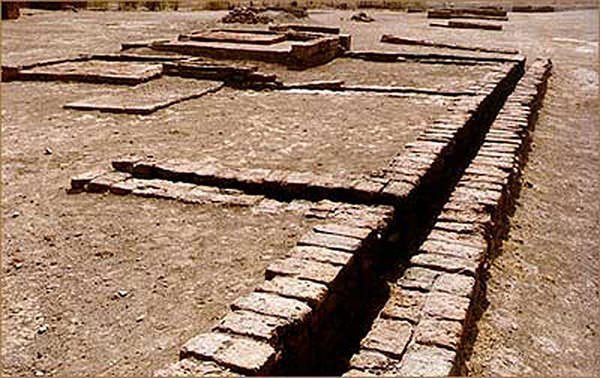
#5 ONE OF THE MOST FAMOUS STRUCTURES OF IVC IS THE GREAT BATH
The advanced architecture of the Indus Valley people is evident by their impressive dockyards, granaries, warehouses, brick platforms and massive protective walls. The Great Bath at Mohenjo-Daro in Sindh, Pakistan is one of the most famous structures of Harappan Civilization. It is considered the earliest public water tank in history. Its dimensions are 11.88 meters x 7.01 meters with a maximum depth of 2.43 meters. Two wide staircases serve as entry to the structure. The Great Bath is watertight with finely fitted bricks on edge with gypsum plaster and a thick layer of bitumen (waterproof tar). Most scholars believe that the structure was used to purge the impurities of the bathers before rituals.
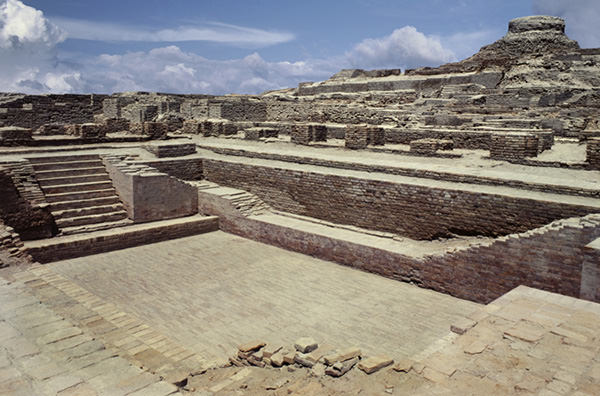
#6 its PEOPLE PIONEERED SEVERAL TECHNIQUES IN METALLURGY AND HANDICRAFTS
The Indus Valley people pioneered techniques in metallurgy and produced copper, bronze, lead, and tin. One of the most famous artifacts from IVC is a bronze statuette of a girl in a standing position, famous as the Dancing Girl of Mohenjo-Daro. Described as “the most captivating piece of art from an Indus site”, the statuette is adorned with many ornaments and her left arm is almost completely concealed with bangles. The custom of wearing so many bangles on the arm is still practiced in many parts of India. IVC developed new techniques in handicraft including seal carving. Its most famous seal is the Pashupati seal which depicts a seated figure surrounded by animals. It is considered by some experts to be a depiction of the Hindu god Shiva in his incarnation called Pashupati or “lord of the animals”, but this remains a matter of debate.
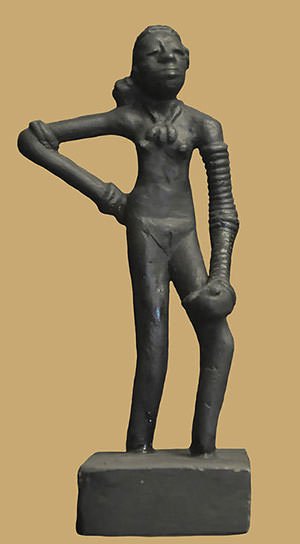
#7 THE MOST PRECISE ANCIENT RULER IS FROM IVC
Indus Valley people were among the first to develop a system of uniform weights and measures. The oldest known measuring rod is a copper-alloy bar from one of its sites. The ruler is divided into units corresponding to 1.32 inches (33.5 mm) and these are marked out in decimal subdivisions with amazing accuracy – to within 0.005 of an inch. Ancient bricks found throughout IVC have dimensions that correspond to these units. One such ruler is calibrated to approximately 1.704 mm, the smallest division ever recorded on a scale of the Bronze Age. The weights discovered from IVC sites have shown a remarkable accuracy. They follow a binary decimal system: 1, 2, 4, 8, 16, up to 12,800 units, where one unit weighs approximately 0.85 grams. Some of the weights are so tiny that they could have been used by jewelers to measure precious metals.
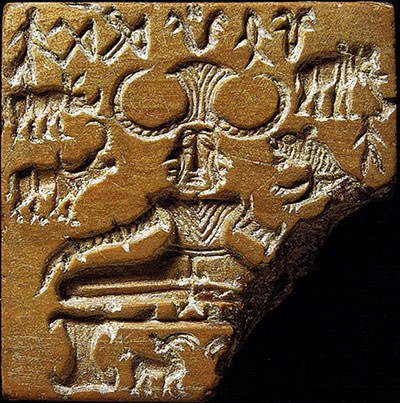
#8 INDUS VALLEY PEOPLE HAD KNOWLEDGE OF DENTISTRY
Buttons were first used in the Indus Valley Civilization. Probably used as ornaments, they were made from seashell and had holes carved in them to attach them to clothing with thread. The earliest evidence in history, of step-wells, wells in which the water may be reached by descending a set of steps, is found at IVC sites. In the centuries following the decline of IVC, this feature was adopted in the architecture of the Buddhists and the Jains of India. In 2001, archaeologists discovered that Indus Valley people had knowledge of proto-dentistry. In April 2006, the oldest evidence for the drilling of human teeth in vivo (i.e. in a living person) was found in Mehrgarh, an IVC site in Pakistan. 11 drilled molars from nine adults were discovered there.
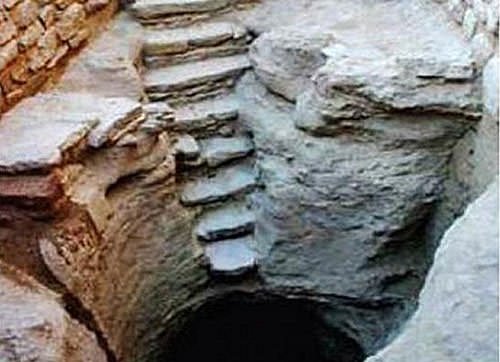
#9 THE PEOPLE OF INDUS VALLEY WERE PEACEFUL AND PROBABLY EGALITARIAN
The most striking difference between Indus Valley and other civilizations is no evidence of an army and a lack of substantial amount of weapons to wage war. It can be thus inferred that Indus Valley people were peaceful. All houses in the settlements of IVC had access to water and drainage facilities giving the impression of a society with relatively low wealth concentration. Though some houses are larger than others, IVC cities are remarkable for their apparent egalitarianism (favoring equality for all). It may be inferred from the highly planned IVC settlements that there was a central authority but how the society functioned and its distribution of power is not yet known. Indus Valley people worshiped trees including Neem and Banyan; animals including Bulls and Elephants; and stones in the form of Lingam and Yoni as sources of potency and divine.
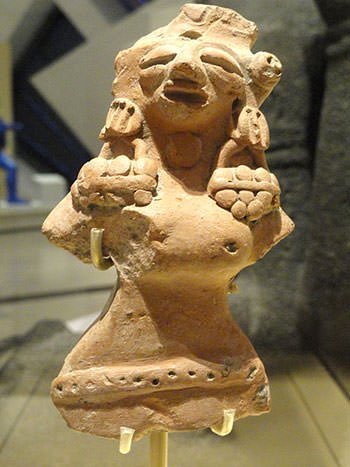
#10 THE REASON FOR ITS COLLAPSE IS NOT KNOWN YET
The cause of the decline and collapse of Indus Valley Civilization in 2nd Century BC is not known yet. An Aryan Invasion theory by which an Indo-European tribe invaded and terminated IVC was proposed by British archaeologist Mortimer Wheeler in 1953. It was based on a group of 37 scarred skeletons. However in 1994 it was proved that the marks on the skulls were caused by erosion, and not violent aggression. The Aryan Invasion theory is now rejected by almost all major authorities on IVC. Harappan economy was significantly dependent on trade with other regions including Persia, Mesopotamia and possibly Egypt. Decline in trade is considered by experts as a possible factor. IVC at its peak may have had a population of over five million, which might have been too much for it to support. Lastly, drought and adverse climatic conditions in the area, is an often cited reason for the collapse of the Indus Valley Civilization.
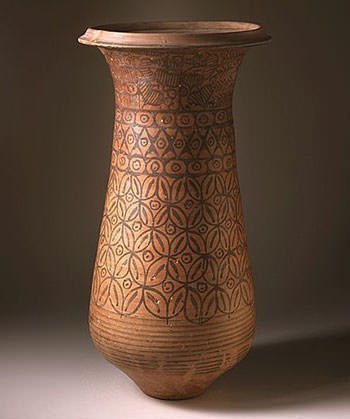
THE INDUS SCRIPT
The Indus Script is a collection of symbols which have been found on artifacts from the Harappan Civilization. More than 400 distinct symbols have been found on seals, tablets, ceramic pots etc. Despite repeated attempts, the writing system of the Indus Valley Civilization has not been deciphered yet. The Rosetta Stone helped in deciphering the script of Ancient Egypt but no such object, on which there is another script along with the Indus Script, has been discovered till now. There have been attempts to link the Indus script with other scripts in India but nothing has been established with certainty. Other scholars have proposed that Indus script is not directly linked to any other script.

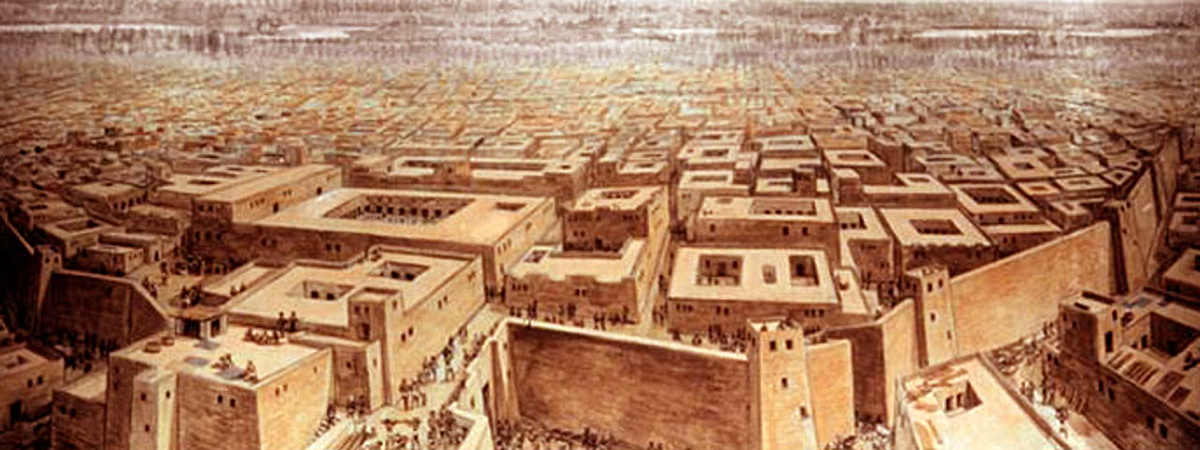
This helped me so much with my report
Happy to help.
It is amazing. Helped a lot for my school project…
Happy to help.
I tried to find some information on Indus Valley civilization and I couldn’t find much AND I had to make a Power Point presentation for my school but i couldn’t find much : (
this is awesome! it helped me with my hw so thanks!
Happy to help.